How to Start Your Own Food Blog: An Expert Guide

Admit it — you know your way around the kitchen.
Whether you’re wielding a whisk, perfecting paella, or creating the next culinary chef-d’oeuvre, it’s clear: Food is your gift, talent, and passion. And if you’re ready to take your compliments-to-the-chef recipes online, it’s time to set up your own blog. But where to start?
Don’t get your garlic in a knot. We’ve got you covered.
In this handy food blogging guide, we provide all the technical know-how you need to get your own food blog up and running, plus first-class advice from experts in the blogging biz. What’s more, we’ll share the best website builder tools for WordPress and all kinds of resources, so you can start showcasing your culinary chops and drool-worthy photography to bring in some dough. You provide the ingredients, and we’ll make your food blog restaurant-ready.
How to Start Your Own Food Blog?
Begin with DreamHost's managed WordPress hosting! Our automatic updates and strong security defenses will take server management off your hands so you can focus on creating great content.

Why Start a Food Blog?
Food bloggers are some of the most influential people on the internet. Don’t believe us? Take a look at the stats:
- More and more, people are ditching grandma’s recipe box and seeking food info on the web. It’s estimated that 50% of consumers now use social media platforms like Twitter and Facebook to learn about food, while another 40% learn from websites, apps, or blogs.
- A massive 89% of consumers go online for recipes; 79% trust blogs for recipes and food information.
- Food bloggers are the cool kids on the block, boasting four times as many followers than any other niche.
- 59% of 25- to 34-year-olds head to the kitchen with either their smartphones or tablets.
- Consumers are not only consuming food content online — they’re sharing it. Fifty-four percent say they share info and recipes with friends, family, and strangers.
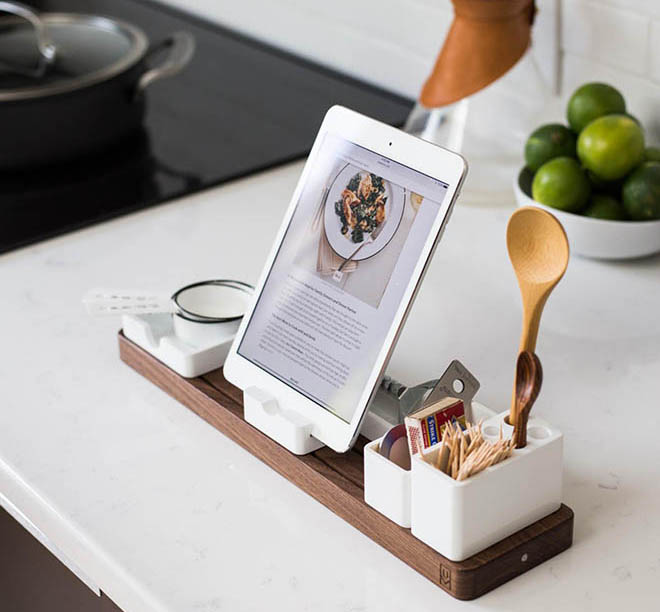
Food blogs have rapidly become popular, credible, and sharable ways for talented, passionate (and normal) people to share their passion for food and recipe creation — and to make big $$$. Food bloggers influence consumer food trends and social discussion and are pioneering the modern food experience. Many have even used their taste-ful content to ink cookbook deals, score cooking show hosting gigs, and amass large and loyal followings that share their content globally.
So if you’re a dish-developing foodie who wants to own a digital presence while becoming an influential voice in food conversation, there’s potential for you. It’s time to bring your kitchen online.
How to Start a Food Blog (8 Steps)
Let’s break it down. What do you even need to create a food blog, grow your traffic, and start making money with your recipes? Consult our handy guide below!
1. Determine Your Niche
When you’re ready to get busy in the kitchen, what’s your go-to creation? Do you specialize in vegan creations? Excel in gluten-free goodies? Are you the queen of 30-minute Instant Pot meals for busy moms?
Whatever you do best — and what you enjoy most — is where you want to start. Finding your niche allows you to distinguish yourself from the millions of other bloggers out there and identify a target audience — which, in turn, helps you understand how to market your content and build a following.
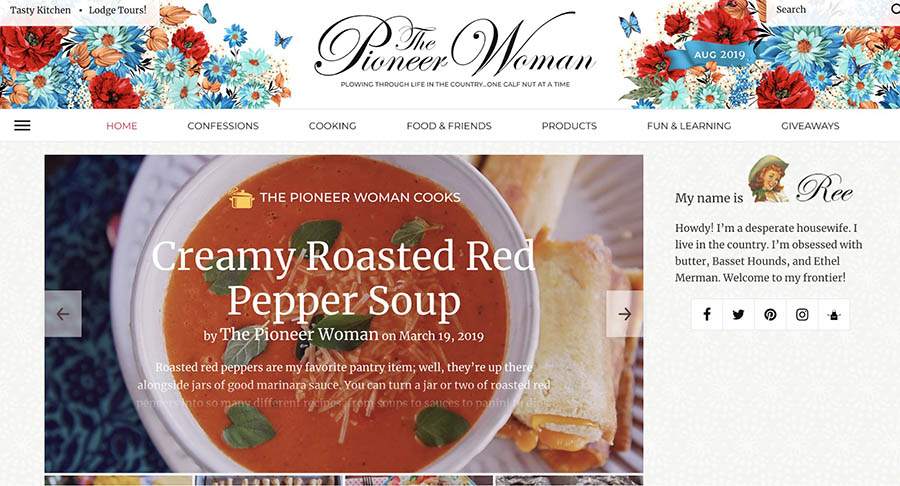
“… blog about what you are passionate about. Don’t start your blog because you want to make money off it. Start your blog because you feel like you have something unique to share with the world. If you truly have the passion and drive, and you are constantly looking for ways to make it better, your blog will eventually succeed and hopefully, turn into a career.”
— Tieghan, blogger at Half Baked Harvest
2. Create a Blog Name
Time to get those creative juices flowing. What do you want to call your blog? Take time to brainstorm ideas, keeping in mind some typical internet behavior. Your best bet is something memorable and unique, but easy to find (and type) online. It should be related to your niche or help establish your brand.
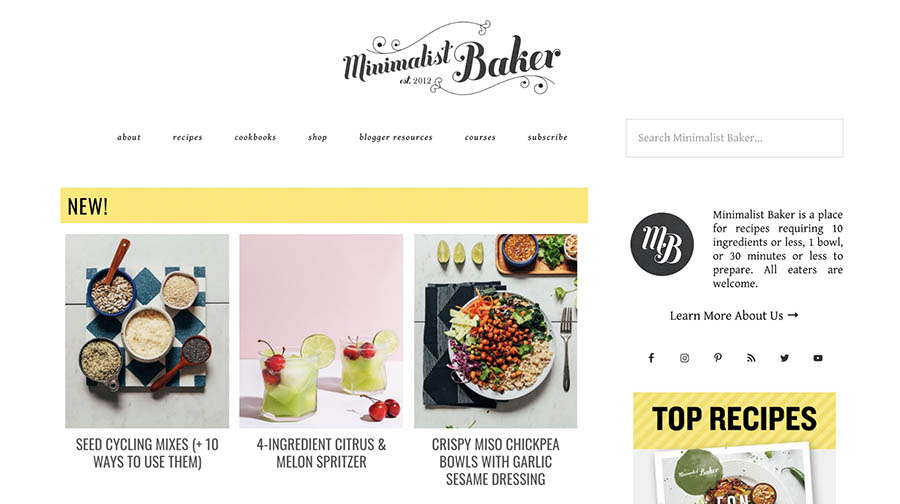
3. Choose your CMS
A content management system, (as the name implies) manages the creation and modification of digital content, making your dream of running a food blog dream a hassle-free reality.
As far as CMS options go, we heartily recommend WordPress — and the love is mutual. At DreamHost, we wear our own WordPress-approved badge with pride. This powerhouse blogging platform fuels more than 30% of the internet and can power your blog, too.
Related: What Is WordPress?
4. Purchase your Domain Name and Hosting
Listen up. Getting a domain and choosing a web host are some of the most crucial decisions you’ll make when you start a blog.
Your domain is an essential building block of search engine optimization (SEO), and a good domain name helps you get found online. Domains should match your blog name and can be purchased through a registrar.
Related: A Beginner’s Guide to Domain Registration
Or better yet: pair the purchase of your domain name with web hosting service. Your hosting plan will provide you with server space to store your files so online browsers can visit your site.
WordPress hosting plans through DreamHost combine the best of tech, tools, and service at a budget-friendly price to help make creating your food blog a snap.
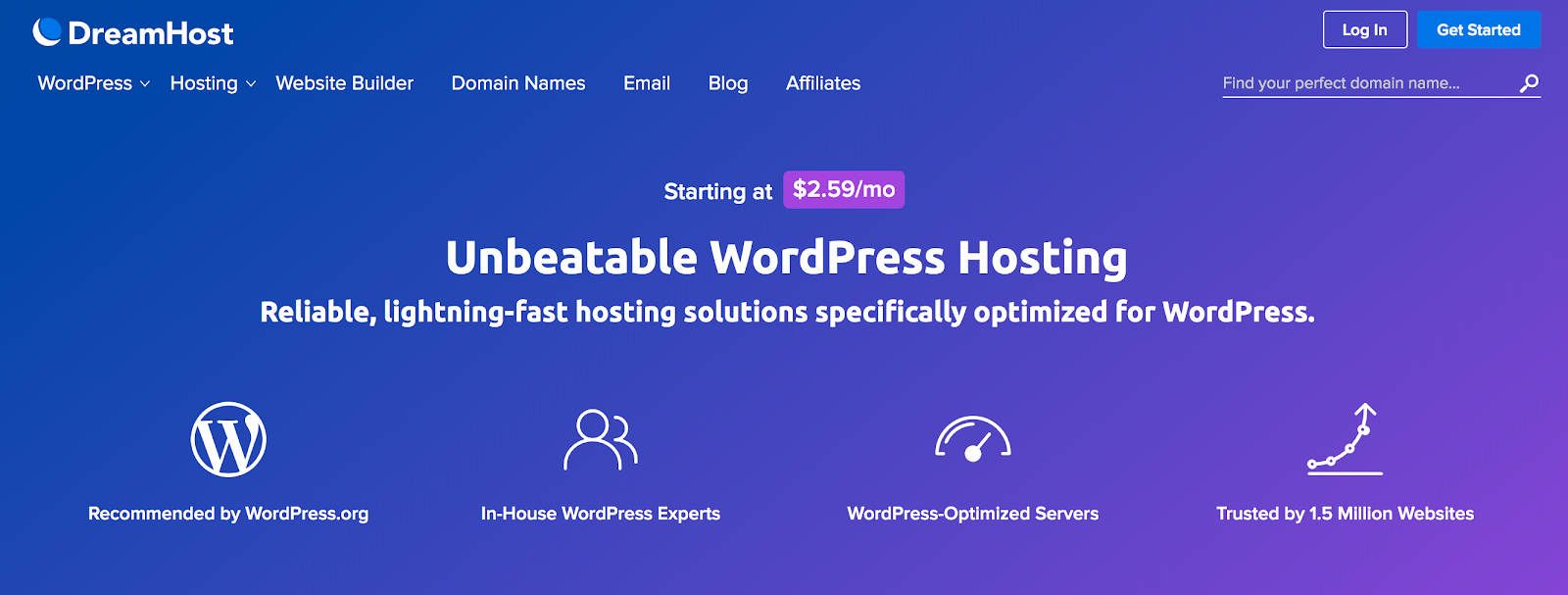
Plus, DreamHost isn’t just a smart option for all the behind-the-scenes setup. Our customers get access to WP Website Builder an easy-to-use drag-and-drop site builder tool for WordPress that simplifies the process, allowing you to customize without coding and make the perfect food blog fast. *chef’s kiss*
With WP Website Builder, we include a suite of premium themes, tools, and plugins — built by our friends at BoldGrid — to help simplify the start-up process and make it easier to edit and manage your website as it grows. Rest easy because you don’t need to start from scratch. Starter content is packed into every beautiful, responsive, and customizable design.
5. Setup
To get started, you’ll need to select “WP Website Builder” as an option during your DreamHost purchase. Then, we’ll automatically install WordPress and website builder tools, BoldGrid’s Inspirations and Page and Post Builder, for you. Once you’re logged into WordPress, you’ll see the Inspirations setup page.
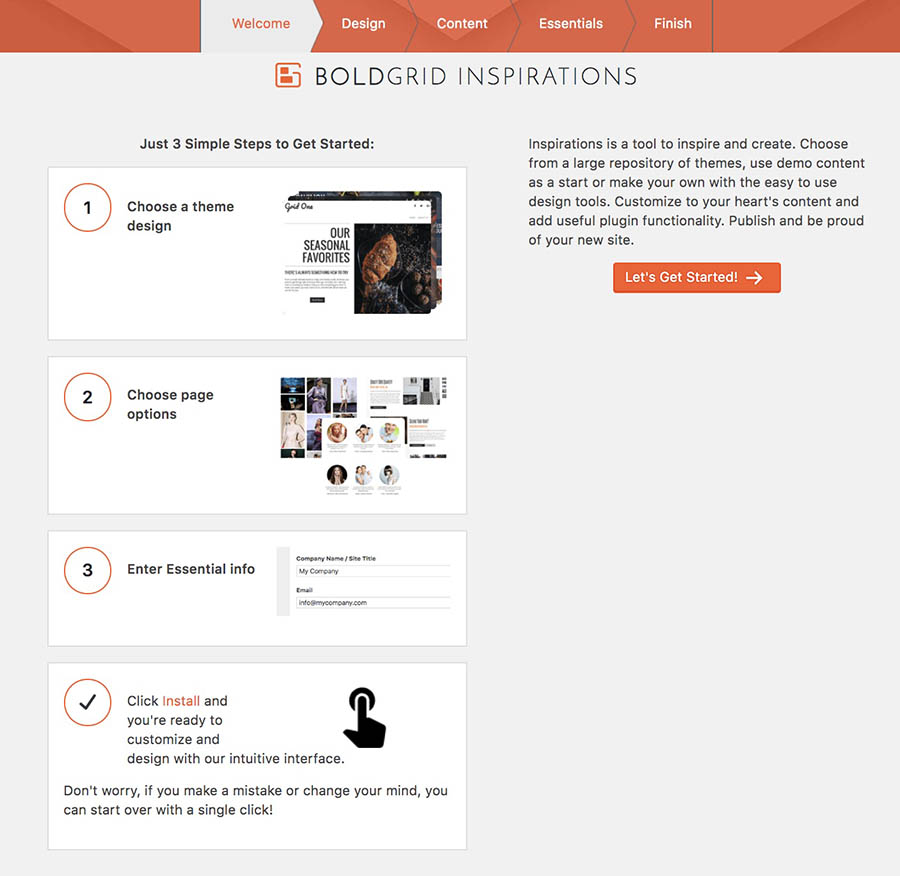
Three simple steps? We knew you’d like the sound of that. And it really is that simple! Click Let’s Get Started! to continue.
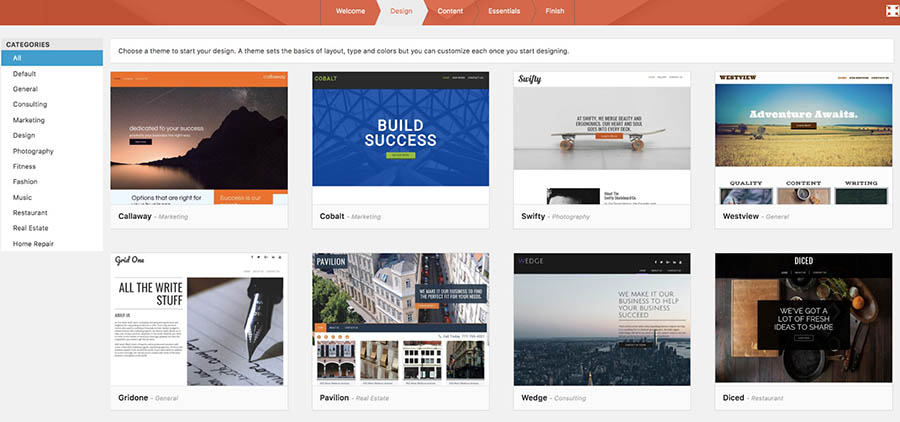
At this stage, you’ll select a theme. You can narrow your options by specific industry-related categories or browse them all to find your perfect starter site. (Hint: There’s even a collection of food-tailored themes under the Restaurant category.) For this guide, we selected the “Hifidel” theme.
Related: Tutorial: How to Install a WordPress Child Theme
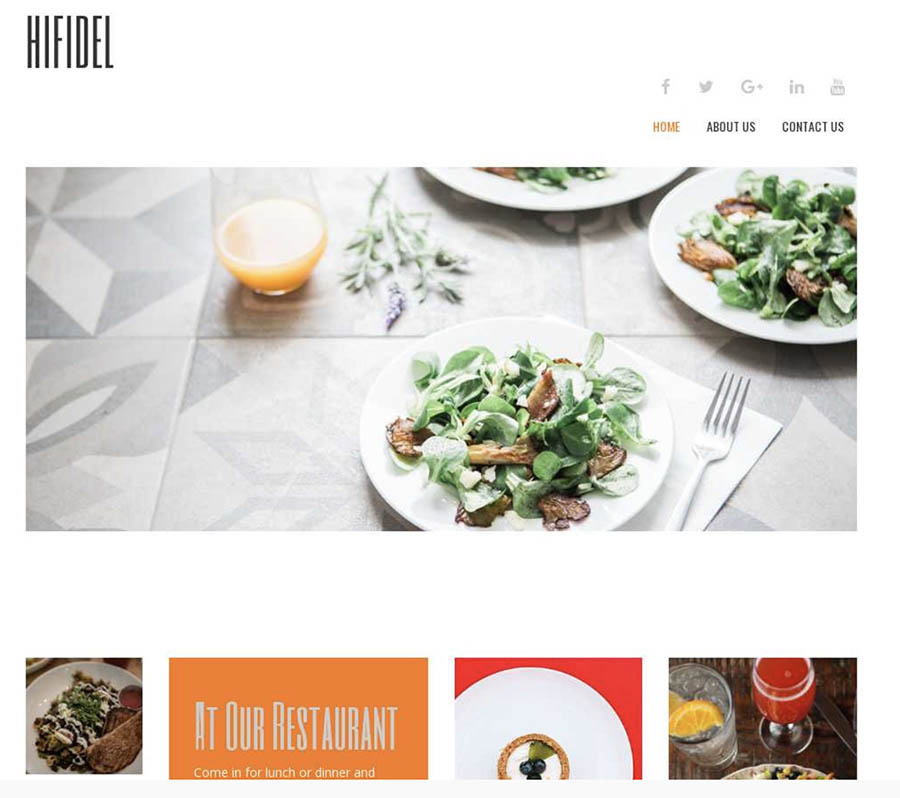
Next, you’ll decide on basic pages and add the functionality you want. You can also view how this theme looks on other devices, like smartphones and tablets. The easy-to-use, drag-and-drop editing paired with design blocks (over 100 options!) helps you build faster and edit easier. It’s simple for beginners, with advanced options for seasoned professionals, making it possible to create the perfect site.
Now, you’ll click Next and enter additional details that help populate your website with social media icons and contact info.
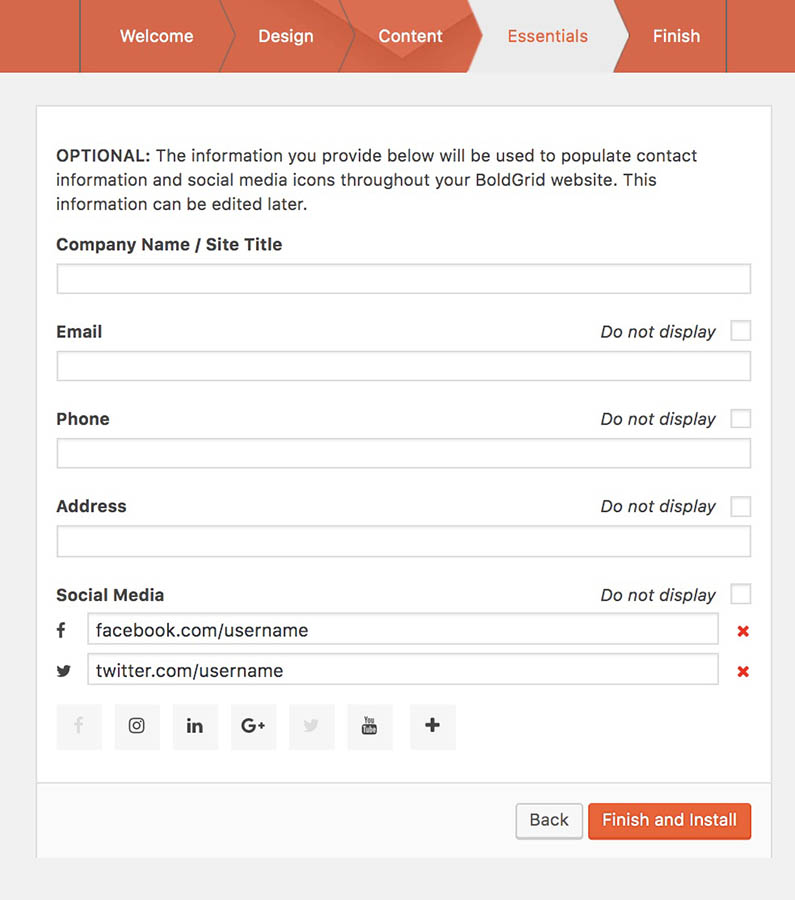
Then, click Finish and Install. Easy as (your famous cherry) pie, right?
Installation is now set up on your WordPress account. From your dashboard, you can continue customizing your website. You’ll want to adjust your site design and add essential elements.
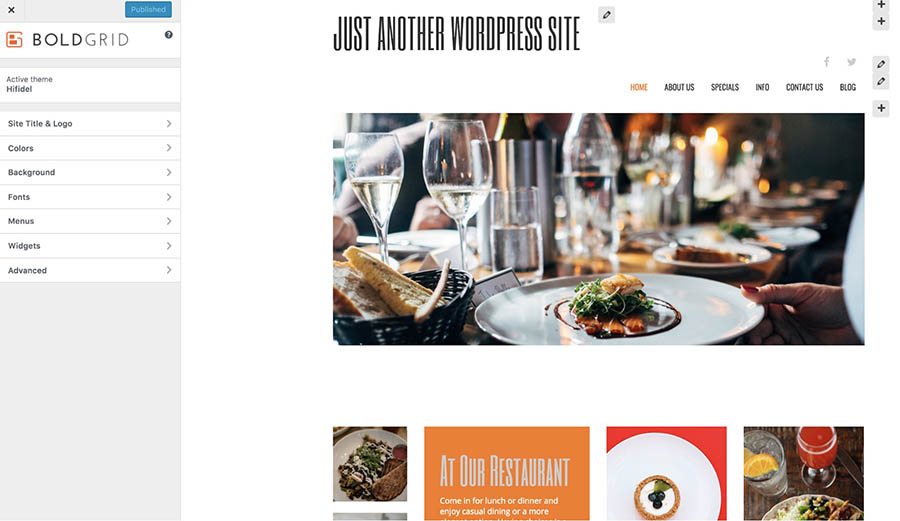
For increased functionality, you’ll also want to install useful plugins. We install a handful of valuable plugins, like SEO, Gallery, and Backup, but you should consider additional tools, like plugins for controlling spam or building forms. (There’s even one for recipes!) Be sure to check out our list of the most essential plugins this year.
With a form-building plugin, you can set up a simple contact form to help you turn your traffic into an email list — a powerful (and critical) way to market your blog content to readers.
Related: How to Create Your First WordPress Plugin (With a Minimal Amount of Coding)
6. Create Content
This step is where it gets really gets good. Time to enrich your website with your one-of-a-kind recipes, heartfelt blog posts, and gorgeous food photography. Your food blog isn’t going to do you much good if it’s empty, so prioritize high-quality content.
Set up a blogging schedule to continually outfit your blog with fresh, consistent, relevant, and yes, delicious content — and to keep yourself organized. Content is what’s going to draw readers to your site, so make it good and keep it coming. When it comes to content, you should always be cooking up a fresh post (or repurposing an oldie but goodie).
Hint: Kate of Cookie + Kate has a bunch of excellent food blogging resources here.
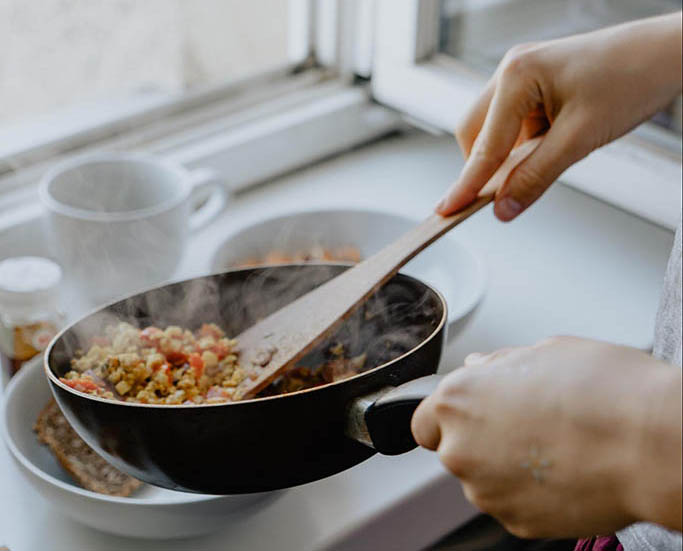
“You have to publish high-quality content every single day. Readers hitting your site for the first time should see consistently updated, fresh content, and they should know that if they come back the next day, there will be something new to read. That’s the only way to get people returning to your site several times a day, checking to see if you’ve updated yet. These can’t be throwaway posts, either; everything you publish to your site needs to be a carefully crafted, professionally-photographed piece of content that will either teach or inform. Then, the next day, you need to do it all over again, and be comfortable with pushing the previous day’s work out of the spotlight after just a brief 24 hours.”
— Julie, blogger at MealHack
7. Spread the Word
Promote your blog by creating content that’s optimized for search engines. Market your content through an email list and social media, such as an Instagram account, Twitter, Facebook, and even a YouTube Channel. You can also consider pay-per-click (PPC) ads.
And don’t forget about increasing traffic through SEO improvements (we can help with this — the WordPress website builder has on-page SEO tips built right in!) There are lots of hungry people out there looking for your unique expertise — plan a marketing strategy that helps them find you.
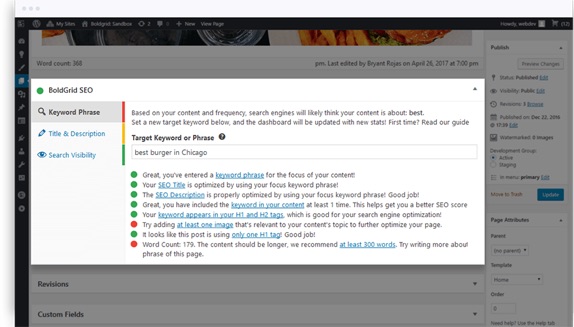
“SEO isn’t black magic; it’s about making your quality content findable. It’s important to understand and implement the basics. Here is Google’s SEO starter guide [PDF] and Bake Your Day’s SEO For Food Bloggers Guide.”
8. Monetize
It’s true — your blog posts can make you money. But likely, it will take time and lots of stellar content. So keep producing. Advertising, networking, affiliate marketing programs, and pitching are all ways you can bring in $$ from your blog.
Hint: Julie of MealHack has great info on monetizing your blog.
Related: 25 Legit Ways You Can Make Money Online
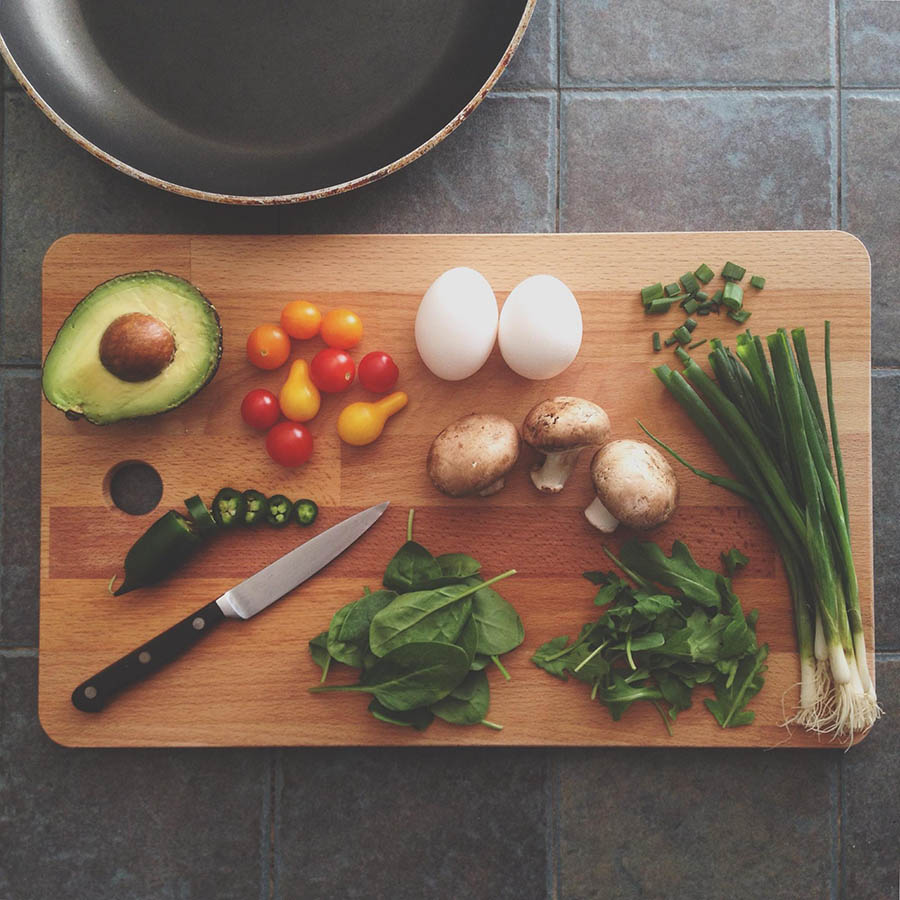
“I’m not saying that you shouldn’t try to make money off your blog, but don’t align yourself with a brand or project that isn’t a good fit. You are the company you keep. Focus on producing your best content and building your audience, and the opportunities will come.”
— Kate, blogger at Cookie + Kate
Get Content Delivered Straight to Your Inbox
Subscribe to our blog and receive great content just like this delivered straight to your inbox.
Starting a Food Blog: The Last Course
For all you foodies looking to share your culinary talents with the world, it’s time to get blogging! We make starting a blog easy. Sign up for WordPress hosting through DreamHost and take advantage of WP Website Builder to enter the food blogging scene with an appetizing (and easy-to-whip-up) site.